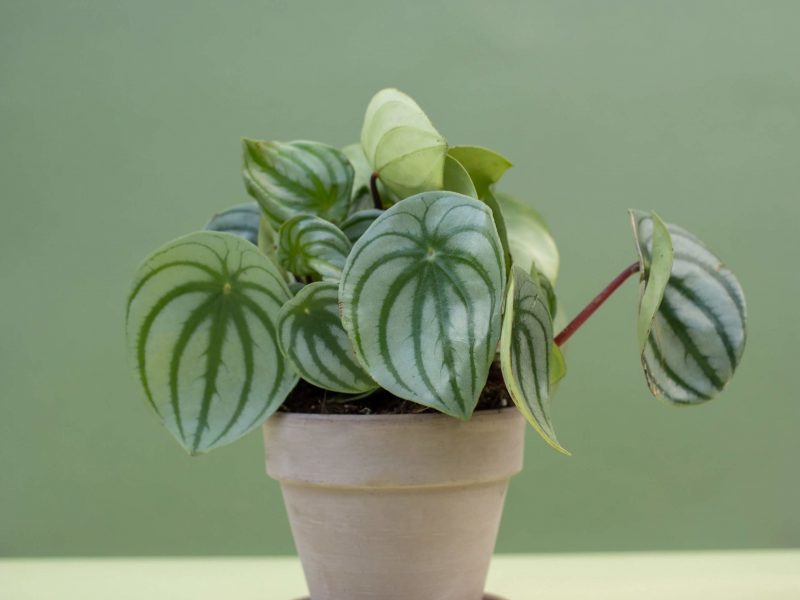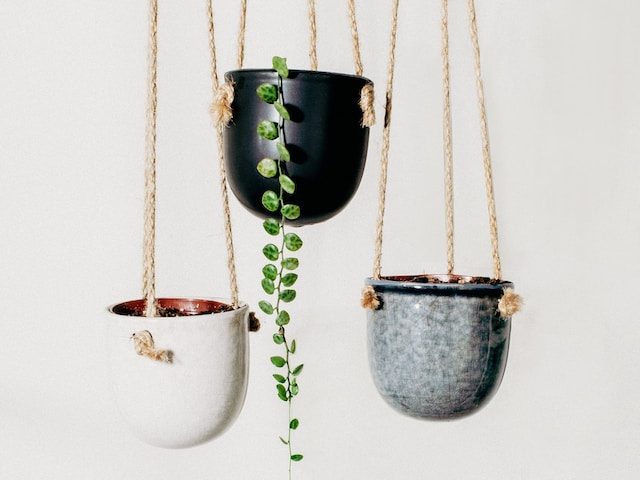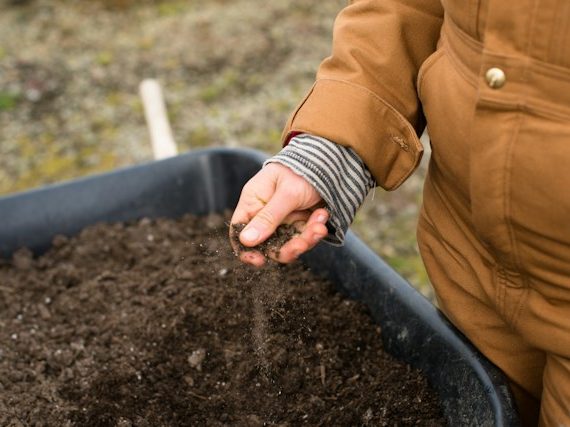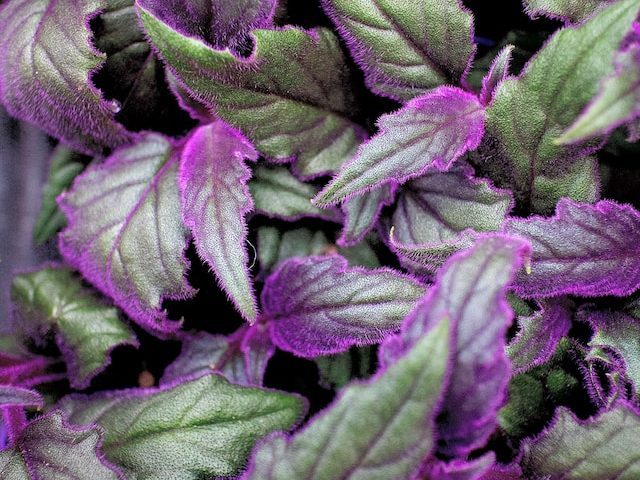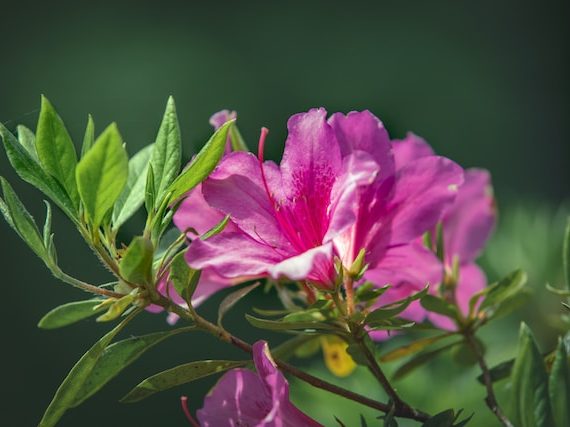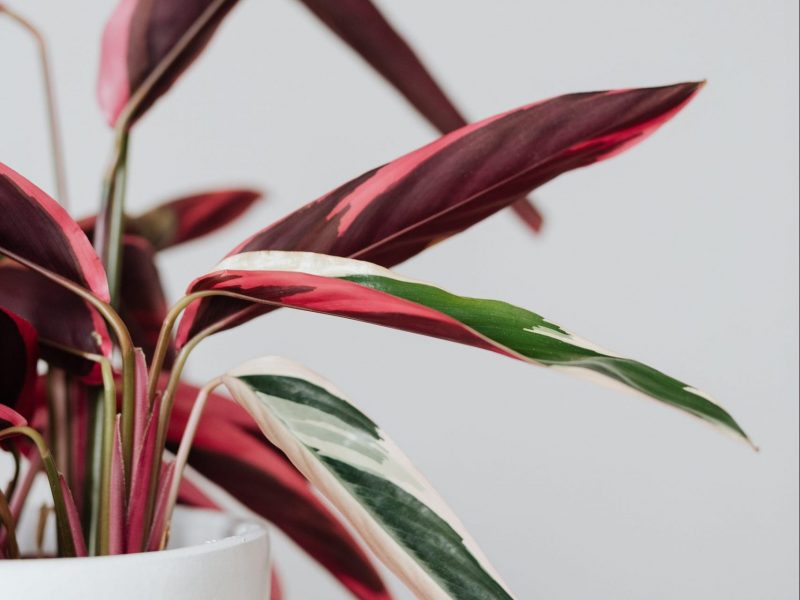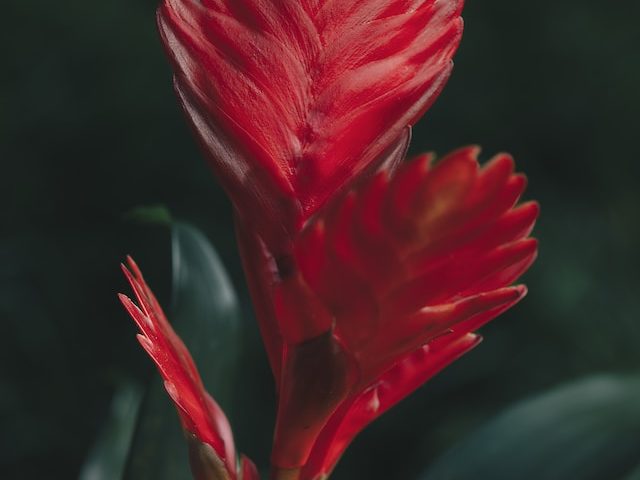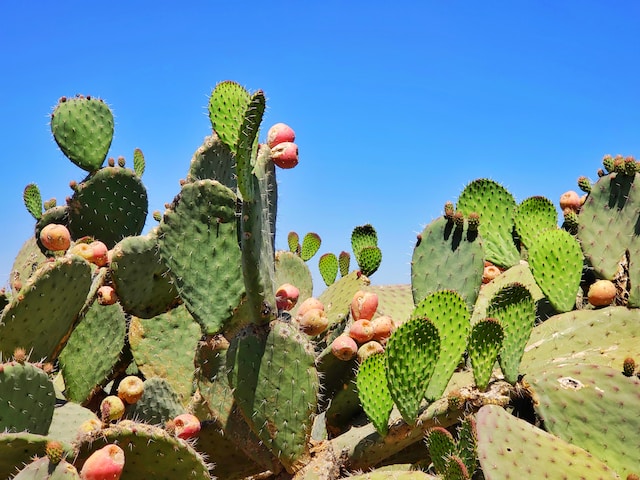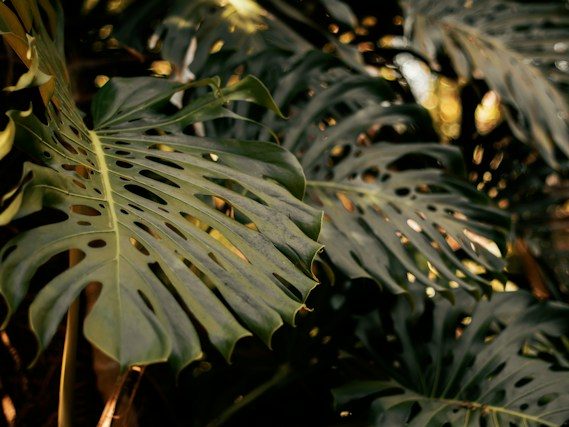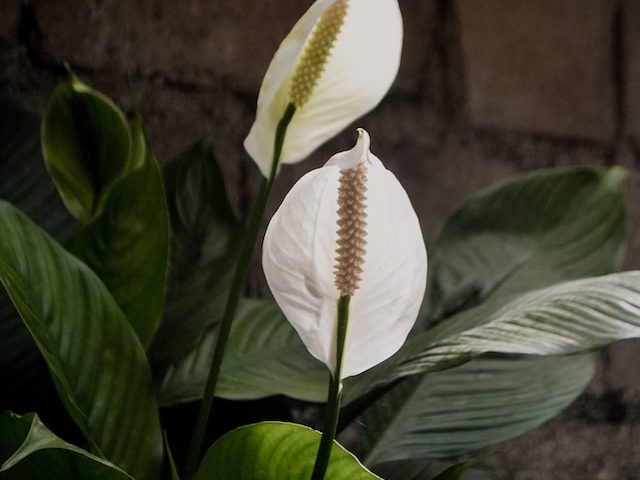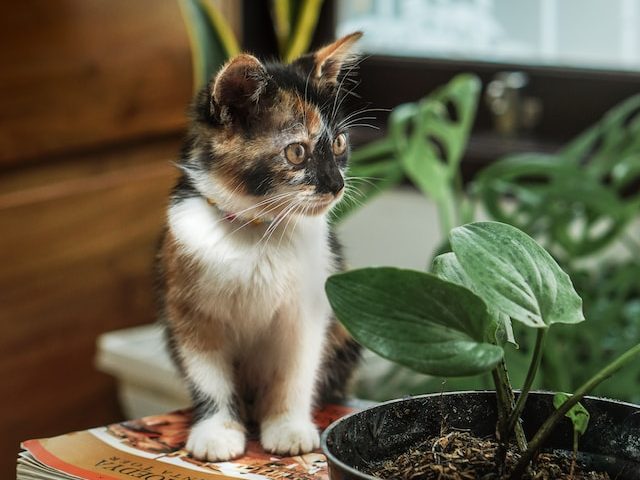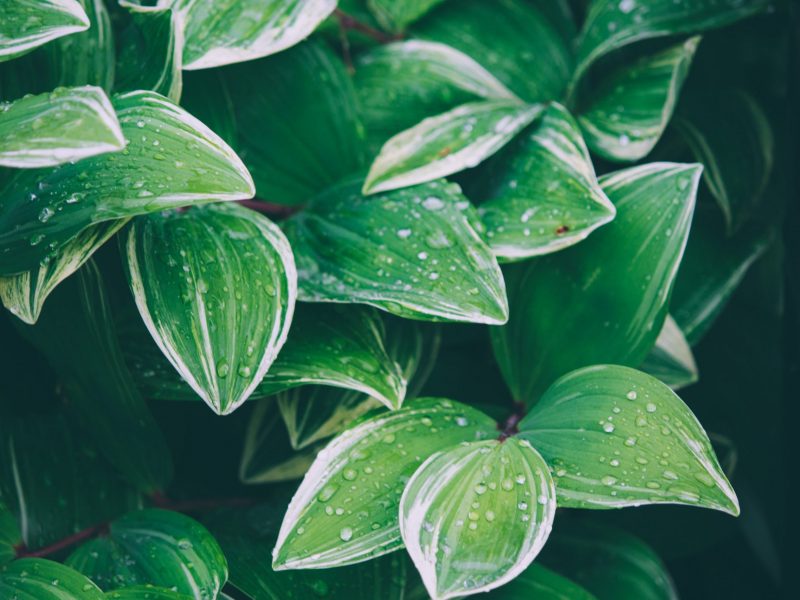Watermelon Peperomia
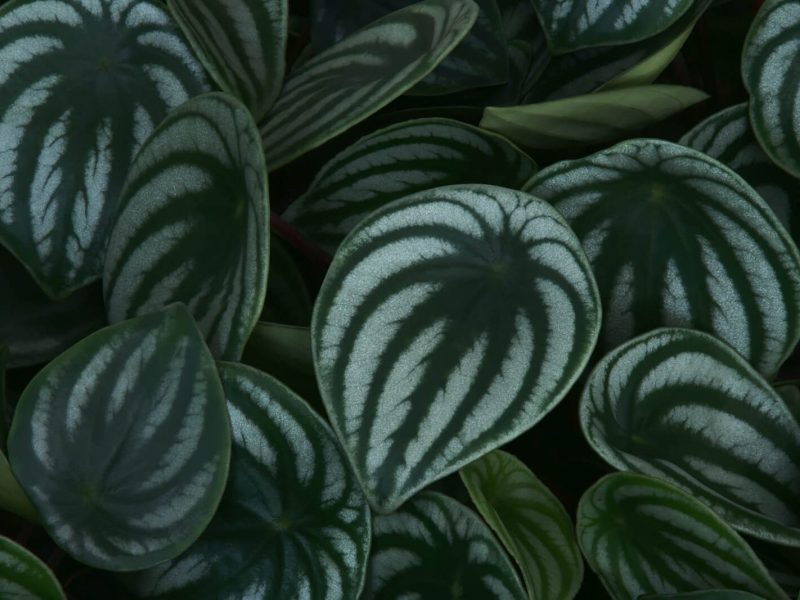
Introduction to Watermelon Peperomia
The Watermelon Peperomia, also known by its Latin name of Peperomia argyreia, has shot up in popularity over the last few years! Loved for its unique, watermelon-like patterned leaves, these plants can adapt well to a range of indoor environments.
One of the appealing features of the Watermelon Peperomia is its compact size. The plant tends to grow up to a foot in height, making it the perfect addition to your desktop, table or windowsill.
Characteristics of the Watermelon Peperomia Plant
Appearance
Its common name – Watermelon Peperomia – stems from the striking resemblance of its leaf pattern to the rind of a watermelon. The ovate leaves with silver stripes against a dark green background indeed mimic the appearance of a ripe watermelon.
Size and Growth
The Watermelon Peperomia is a compact plant, usually growing no taller than 12 inches. In terms of width, the plant generally does not exceed 8 inches. This makes it a perfect choice for those looking for a space-efficient plant.
Blooming
While the Watermelon Peperomia is primarily loved for its patterned leaves, it does produce flowers. Its blooms are small, green and grow on tall, slender stalks. They are not as visually exciting as the leaves and it’s totally up to you whether you keep them on the plant or remove them.
Light Requirements for Watermelon Peperomia
Firstly, Watermelon Peperomia prefers bright but indirect light, the indirect is the most important thing. This can be achieved by placing your plant near a window that gets plenty of natural light, but not directly in the sunlight. Direct rays hitting the leaves can lead to scorching of the leaves, causing them to turn yellow or brown. This is especially a problem in summer when the sun is a lot stronger.
In seasons with less natural light, such as winter, you may need to supplement with artificial light to keep your plant healthy or move your plant a little closer to the window. Fluorescent lights or grow lights can be a good solution in such situations.
Low light: Changes in light intensity can affect the color and pattern of the Watermelon Peperomia’s leaves. If the light is too dim, the leaf patterns may fade and you may find new growth to be smaller and more leggy.
Watering your Watermelon Peperomia: When, How and How Much
When to Water your Watermelon Peperomia
We are very against having a set schedule to water your plants and instead recommend that you only water your plant when it actually needs it. This can change from week to week and throughout the seasons quite dramatically.
A common sign that your plant needs watering is when the top 1-2 inches of the soil is completely dry (if you are watering from the top down). You can use a variety of methods to test soil moisture, including the finger/chopstick method, the lifting method or using a moisture meter.
How to Water your Watermelon Peperomia
When it comes to watering, this plant prefers the ‘soak and dry’ method to ensure that the potting mix has time to dry out, rather than staying moist for long periods of time. Here’s how to do it:
- Soak: Water the plant thoroughly, ensuring every part of the soil gets wet.
- Drain: Allow any excess water to drain out. Never leave your plant sitting in water as this can lead to root rot!
- Dry: Wait until the top 1-2 inches of the soil are dry before watering again. This usually takes about a week, but can vary depending on conditions such as light and humidity.
How Much Water to Use
There’s no one-size-fits-all answer to this as it depends on several factors including the size of your plant and its pot, the time of year, and the humidity of your home. Generally, a thorough soaking of the soil until water comes out of the drainage holes is a good rule of thumb. Remember, it’s always better to under-water than over-water when it comes to the Watermelon Peperomia.
Ideal Temperature and Humidity Levels
Temperature: Watermelon Peperomia plants prefer warmer environments, much like their natural tropical habitat. Ideal temperatures range from 65 to 80 degrees Fahrenheit (18-27 degrees Celsius). However, they can tolerate lower temperatures down to 60 degrees Fahrenheit (15 degrees Celsius) without harm.
Avoid placing your plant in areas where it may be exposed to extreme temperature fluctuations, such as near heaters or air conditioning units. Using a digital thermometer can really help here to spot changes before it causes harm to your plant.
Humidity: These plants also thrive in humid conditions. Ideally, the humidity level should be between 40% and 60%. To increase humidity, consider placing your plant in a tray filled with pebbles and a bit of water. You can also group it with other plants, as this naturally increases humidity through transpiration. A humidifier is another great option for a more consistent higher humidity level.
Choosing the Right Soil and Pot
Your Watermelon Peperomia requires well-draining soil, a blend that prevents water from stagnating around the roots. A premium potting mix combined with either perlite or sand can do the trick. The ratio should be around 2:1, two parts potting soil to one part perlite or sand.
- Potting soil: Rich in organic matter, it provides the necessary nutrients for your plant.
- Perlite or sand: These elements enhance the soil’s drainage capacity.
When it comes to the right pot, it needs to have drainage holes at the bottom. This feature allows excess water to escape out of the bottom of the pot, preventing any potential root rot. A ceramic or terracotta pot is beneficial because these materials are porous, allowing the roots to breathe.
When it comes to size, a slightly snug pot is best for Watermelon Peperomia. This plant grows predominantly in the vertical direction with little horizontal spread, so it does not need a wide pot. However, you should repot your plant every two years or so to give it more space as it grows (more on repotting below).
Repotting a Watermelon Peperomia
When to Repot
Identifying the right time to repot your Watermelon Peperomia is essential. If the plant has outgrown its current pot or the soil has become depleted of nutrients, it’s time for repotting. Pay close attention to signs such as roots peeking out of the drainage holes or a sudden cessation in growth. These are clear indicators that your plant is ready for a new home. Generally, repotting should be done every 2-3 years but sooner if your plant is showing signs of being rootbound.
Choosing the Right Pot
The pot you choose for your Watermelon Peperomia should be only slightly larger than the current one. A pot that is too big can lead to overwatering issues, as the soil will remain wet for a longer time. It can also lead to stability issues, but this is more of a concern in taller houseplants.
Steps to Repot
- Remove the plant: Gently take the Watermelon Peperomia out of its current pot, being mindful not to damage the roots. Don’t tug at the leaves to remove the plant as they have very thin stems which can be damaged easily.
- Prepare the new pot: Place a layer of fresh potting mix at the bottom of the new pot. This should be a well-draining mix to prevent waterlogging.
- Transplant: Place the plant in the center of the new pot and fill around it with more potting mix. Ensure that it is at the same depth as it was in the old pot.
- Water: After repotting, water your plant thoroughly to settle the soil.
Fertilizing your Watermelon Peperomia
When to Fertilize
The best time to fertilize your Watermelon Peperomia is during its active growing phase, which is generally during spring and summer. During this period, you should fertilize your plant once a month. In the dormant winter months, there’s no need to fertilize as your plant won’t be producing much or any new growth.
Type of Fertilizer
Watermelon Peperomia thrives with a balanced liquid fertilizer. A good choice would be a 20-20-20 mix, meaning it contains equal parts of Nitrogen (N), Phosphorus (P) and Potassium (K). Be sure to dilute the fertilizer slightly more than recommended to avoid overfertilizing.
How to Fertilize
- Dilute the liquid fertilizer with water according to the instructions on the package (and dilute even a little more than recommended).
- Before you fertilize, water your plant thoroughly. This helps to prevent the roots from getting burnt by the fertilizer.
- Apply the diluted fertilizer to the soil, making sure it’s evenly distributed.
Pruning a Watermelon Peperomia
The Watermelon Peperomia doesn’t require much pruning. However, it’s necessary to remove yellow or damaged leaves to keep the plant healthy. When you notice any discolored or wilted leaves, cut them off at the stem using a sharp, sanitized pair of scissors. This helps in maintaining the aesthetic appearance of the plant as well as its overall health. You can remove dead or dying leaves at any point in the year!
Watermelon Peperomia Toxicity
Watermelon Peperomia is a non-toxic plant. This means it’s safe to have around curious pets and playful toddlers. However, it’s still important to ensure that your pets or little ones are not ingesting any part of the plant, as it can lead to mild digestive discomfort.
Let’s delve a bit into the details:
- While non-toxic, the plant is not meant for consumption. It doesn’t provide any nutritional benefits to cats, dogs, or humans.
- Ingesting parts of the plant can result in mild gastrointestinal upset, such as vomiting or diarrhea. This is not due to the plant being poisonous, but because it’s simply not part of a regular diet for pets or humans.
- Chewing or biting into this plant can cause irritation to the lips, mouth, and tongue due to the plant’s natural plant chemicals.
Watermelon Peperomia Flowers
These plants produce small, non-showy flowers on tall, narrow spikes that look a little like rat tails. However, they’re not particularly known for their blooms as they aren’t really anything special.
When Does Watermelon Peperomia Flower?
Watermelon Peperomia can flower at any time of the year, but they’re more likely to bloom in the spring and summer months. It’s during this period that the plant’s conditions are most suitable for flowering. However, remember that your plant may not flower every year or at all and that’s perfectly fine.
Should You Remove Watermelon Peperomia Flowers?
There’s no need to remove the flowers unless they start to die or brown. The plant uses a lot of energy to produce these flowers, so removing them can help to divert energy to growing new healthy leaves. If the flowers are taking away from the overall appearance of your plant or if they’re wilting, then you may also choose to remove them.
Do Watermelon Peperomia Flowers Smell?
No, Watermelon Peperomia flowers do not have a noticeable scent.
Cleaning your Plant
Your Watermelon Peperomia will appreciate occasional cleaning to keep its foliage looking fresh and vibrant. Cleaning your plant not only enhances its aesthetic appeal but also keeps pests at bay and improves photosynthesis. Here’s a simple guide on how you can maintain your plant’s cleanliness:
1. Regular Dusting
Just like any other houseplant, your Watermelon Peperomia can accumulate dust on its leaves. Dust can restrict light penetration, affecting the plant’s photosynthesis process. Dust your plant’s leaves gently with a soft, dry cloth or a soft bristle paintbrush to remove any dust build-up.
2. Washing
For a more thorough cleaning, consider washing your plant. This can be achieved by lightly spraying the plant with a water bottle, or gently rinsing under a tap with lukewarm water. Remember to let the plant dry naturally to avoid water spots.
It’s important that you don’t wash your plant with extremely cold or hot water as this can shock or burn the plant.
3. Checking for Pests
While cleaning your plant, it’s also an excellent opportunity to check for pests. Inspect the underside of the leaves for any signs of insects. If you find any, a simple solution of mild soapy water can help get rid of them. Remember, early intervention is key in preventing a full-blown infestation.
Note: Always be gentle when cleaning your Watermelon Peperomia. Its leaves are delicate as they have very thin stems and can easily be damaged by harsh cleaning.
Watermelon Peperomia FAQs
Are Watermelon Peperomia plants easy to care for?
Watermelon Peperomia plants are relatively easy to care for. Whilst they aren’t complete low-maintenance plants, they don’t die at the smallest change in environment and can adapt quite well to a range of environments. As long as you are consistent with your watering habits, you shouldn’t have too many issues keeping these plants thriving.
How much water does my Watermelon Peperomia need?
You need to create a good balance between not allowing the potting mix to dry out for extended periods of time, but avoiding waterlogged soil. Watermelon Peperomia plants are sensitive to root rot but they can also become quite limp if not watered regularly. Using a moisture meter will really help you create a good watering routine.
Can Watermelon Peperomia tolerate full sun?
Watermelon Peperomia plants are quite versatile when it comes to light conditions but will do best in medium to bright, indirect light. Try to avoid direct sunlight as this can scorch the leaves.
Whilst the Watermelon Peperomia can tolerate low light levels, you will start to see the new leaves have less variegation and be a darker green color.
Are Watermelon Peperomia toxic?
You’ll be pleased to know that Watermelon Peperomia plants are non-toxic and completely safe for pets and humans.
Common Problems with your Watermelon Peperomia
Why are my Watermelon Peperomia's leaves curling?
It can be a little tricky to know exactly why the leaves on your Watermelon Peperomia curl so we recommend going through the following and eliminating them one by one to find the cause: overwatering, low temperatures, low humidity, heat stress.
Why is my Watermelon Peperomia losing leaves?
If you notice your Watermelon Peperomia losing leaves then it may be due to a drop in temperature or overwatering. We recommend you check the soil’s moisture first and replace if waterlogged. If watering isn’t the issue then try moving your Watermelon Peperomia to a warmer spot in your home (but away from direct light).
Why does my Watermelon Peperomia have yellow leaves?
The occasional yellow leaf on a Watermelon Peperomia is totally fine as this is simply natural aging. However, if the rate of yellowing is quite high then it’s a sign something isn’t quite right.
The two most common causes of yellow leaves on a Watermelon Peperomia are overwatering or too much direct light. Monitor the spot your plant is in to see how much light it receives and check the soil moisture level to confirm which is the cause.
Why are the leaves on my Watermelon Peperomia losing their pattern?
Lighting issues can cause your Watermelon Peperomia to lose variegation on their leaves. If not receiving enough light, then the leaves will turn more solid green. If your plant is receiving too much light then the whole leaf will look faded.



